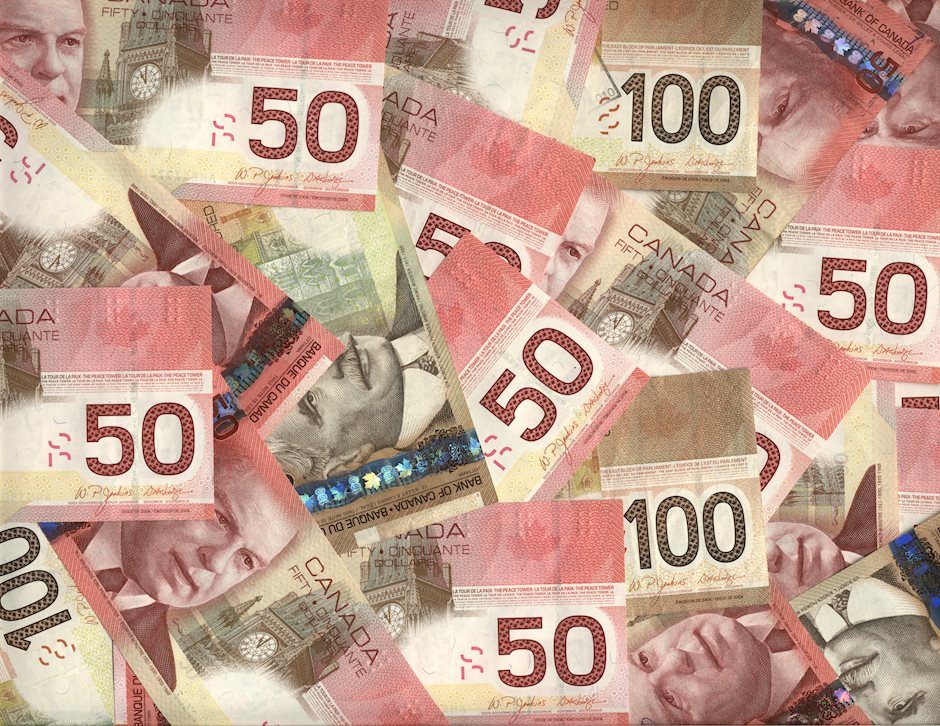Canadian Dollar extends rebound as markets focus on US election
- The Canadian Dollar added another 0.4% to extend the week’s rebound.
- Canada sees a tepid showing on the economic calendar this week.
- Broader markets remain focused on US election results, impending Fed rate cut.

The Canadian Dollar (CAD) gained further ground on Tuesday, climbing over four-tenths of one percent against the Greenback as global markets hunker down and wait for the outcome of the US presidential election this week.
Canada sees a limited spread of mid-tier data releases on the economic calendar this week, leaving the Loonie at the mercy of global market flows into and out of the safe haven US Dollar (USD). With another Federal Reserve (Fed) rate cut looming over the horizon, market volatility is set to whip and froth in tune with the US release schedule this week.
Daily digest market movers
- Canadian Internation Merchandise Trade shrank again in September, contracting by 1.26 billion CAD compared to August’s -1.47 billion contraction.
- The US ISM Services Purchasing Managers Index (PMI) stepped higher in October, rising to 56.0 from the previous d54.9 and handily beating the forecast decline to 53.8.
- The Bank of Canada’s (BoC) latest Summary of Deliberations revealed little new of note as the Canadian central bank continues to grapple with a lopsided economic decline taking hold of the broader Canadian economy.
- The seasonally-adjusted Canadian Ivey PMI is expected to climb on Thursday, forecast to rise to 54.2 in October compared to September’s 53.1.
- After the US presidential election finishes roiling markets early this week, investors will be pivoting on their heels to face Thursday’s impending Federal Reserve (Fed) rate call, which is expected to deliver another quarter-point rate cut.
Canadian Dollar price forecast
The Canadian Dollar (CAD) has extended into a second day of recovery against the Greenback, climbing another 0.45% and dragging the USD/CAD pair back below 1.3850. The pair reached a near-term high just north of 1.3950 late last week after the US Dollar capped off a 4% rally against the Loonie.
USD/CAD continues to grind out chart paper in a long-term sideways trend since reaching familiar footholds in mid-2022. In the medium-term, the pair is likely headed for a fresh leg into the low end below 1.3600 if current technical flows maintain their stranglehold on USD/CAD patterns.
USD/CAD daily chart

Canadian Dollar FAQs
The key factors driving the Canadian Dollar (CAD) are the level of interest rates set by the Bank of Canada (BoC), the price of Oil, Canada’s largest export, the health of its economy, inflation and the Trade Balance, which is the difference between the value of Canada’s exports versus its imports. Other factors include market sentiment – whether investors are taking on more risky assets (risk-on) or seeking safe-havens (risk-off) – with risk-on being CAD-positive. As its largest trading partner, the health of the US economy is also a key factor influencing the Canadian Dollar.
The Bank of Canada (BoC) has a significant influence on the Canadian Dollar by setting the level of interest rates that banks can lend to one another. This influences the level of interest rates for everyone. The main goal of the BoC is to maintain inflation at 1-3% by adjusting interest rates up or down. Relatively higher interest rates tend to be positive for the CAD. The Bank of Canada can also use quantitative easing and tightening to influence credit conditions, with the former CAD-negative and the latter CAD-positive.
The price of Oil is a key factor impacting the value of the Canadian Dollar. Petroleum is Canada’s biggest export, so Oil price tends to have an immediate impact on the CAD value. Generally, if Oil price rises CAD also goes up, as aggregate demand for the currency increases. The opposite is the case if the price of Oil falls. Higher Oil prices also tend to result in a greater likelihood of a positive Trade Balance, which is also supportive of the CAD.
While inflation had always traditionally been thought of as a negative factor for a currency since it lowers the value of money, the opposite has actually been the case in modern times with the relaxation of cross-border capital controls. Higher inflation tends to lead central banks to put up interest rates which attracts more capital inflows from global investors seeking a lucrative place to keep their money. This increases demand for the local currency, which in Canada’s case is the Canadian Dollar.
Macroeconomic data releases gauge the health of the economy and can have an impact on the Canadian Dollar. Indicators such as GDP, Manufacturing and Services PMIs, employment, and consumer sentiment surveys can all influence the direction of the CAD. A strong economy is good for the Canadian Dollar. Not only does it attract more foreign investment but it may encourage the Bank of Canada to put up interest rates, leading to a stronger currency. If economic data is weak, however, the CAD is likely to fall.
Author

Joshua Gibson
FXStreet
Joshua joins the FXStreet team as an Economics and Finance double major from Vancouver Island University with twelve years' experience as an independent trader focusing on technical analysis.

















